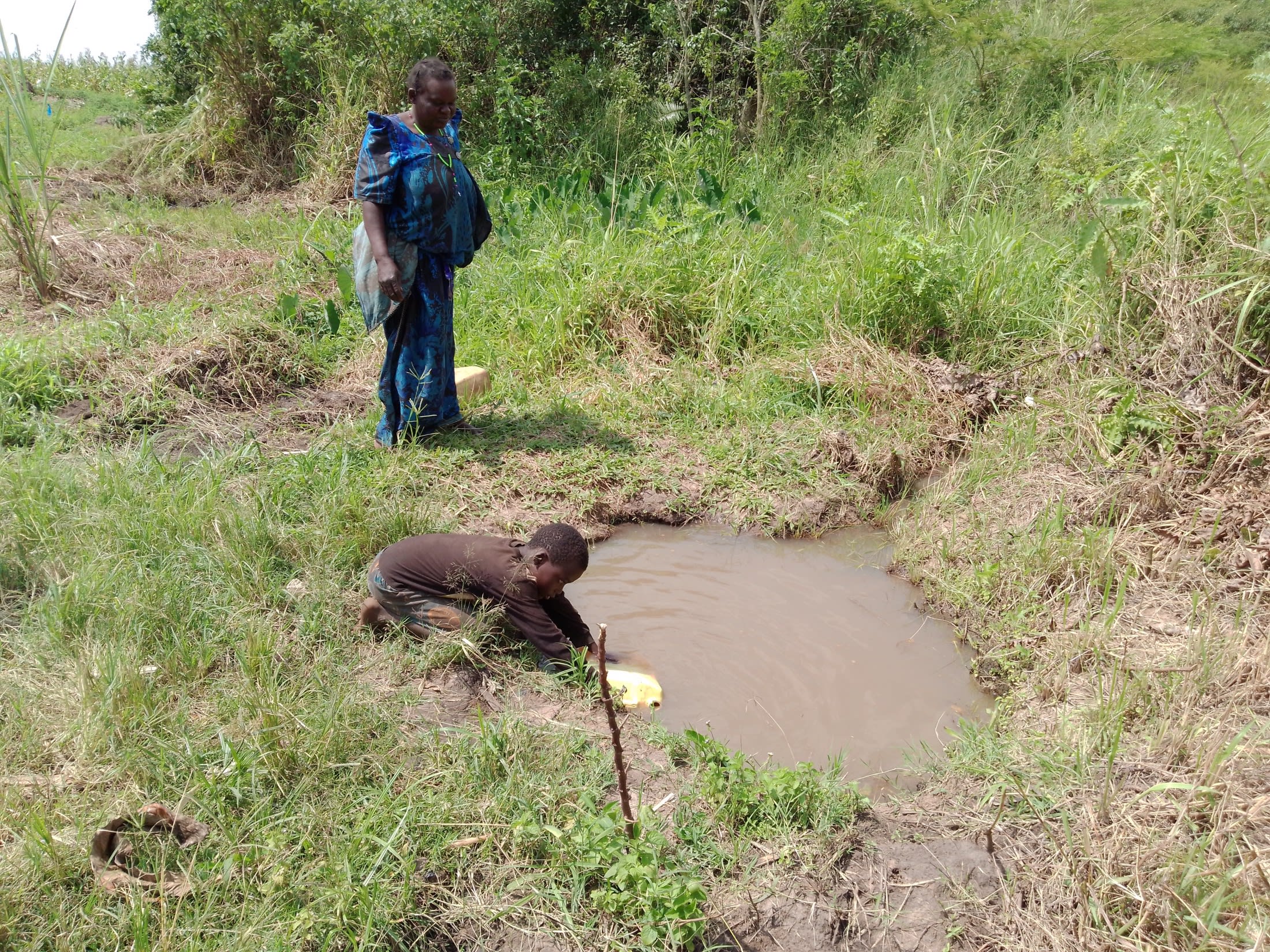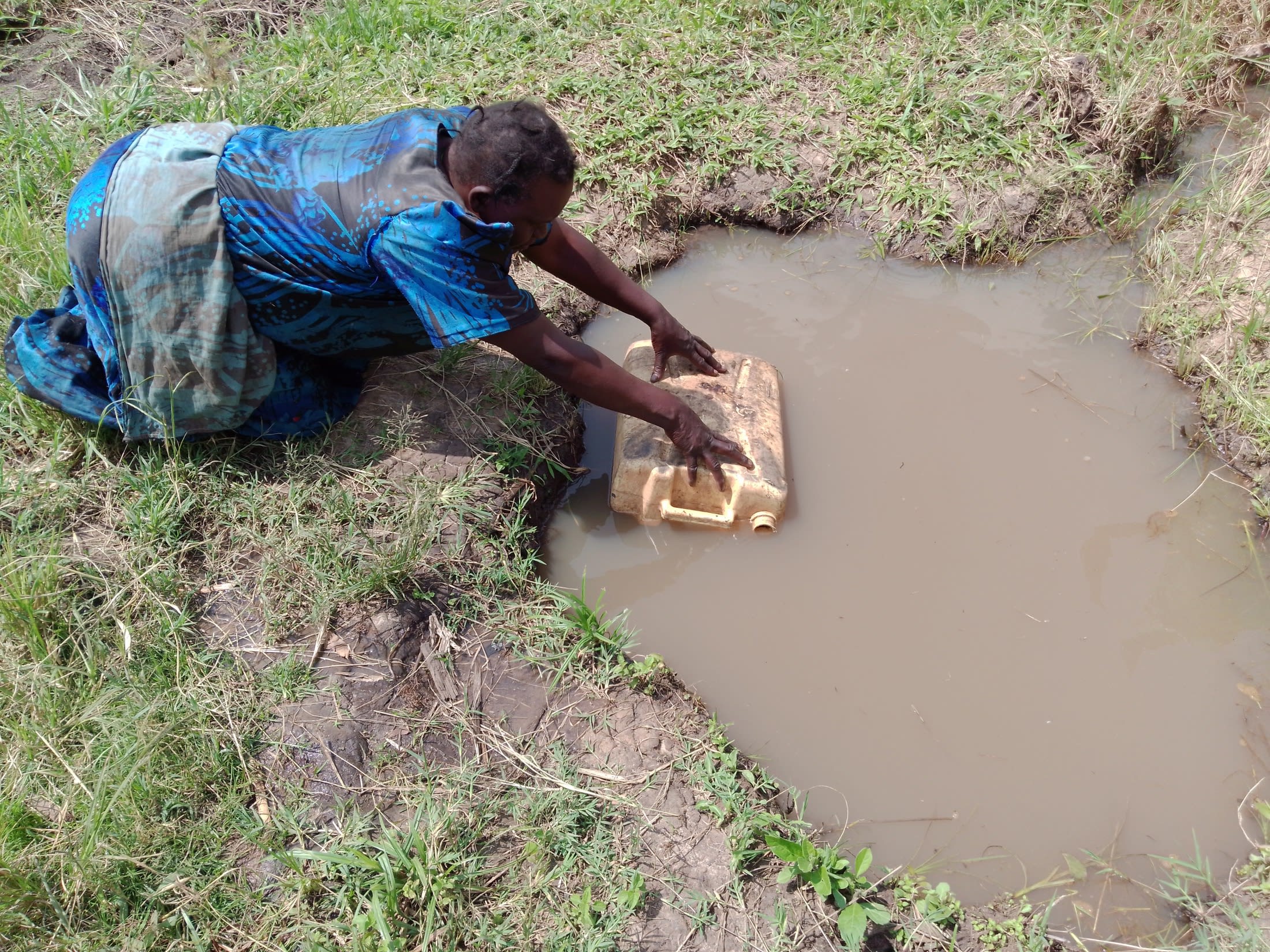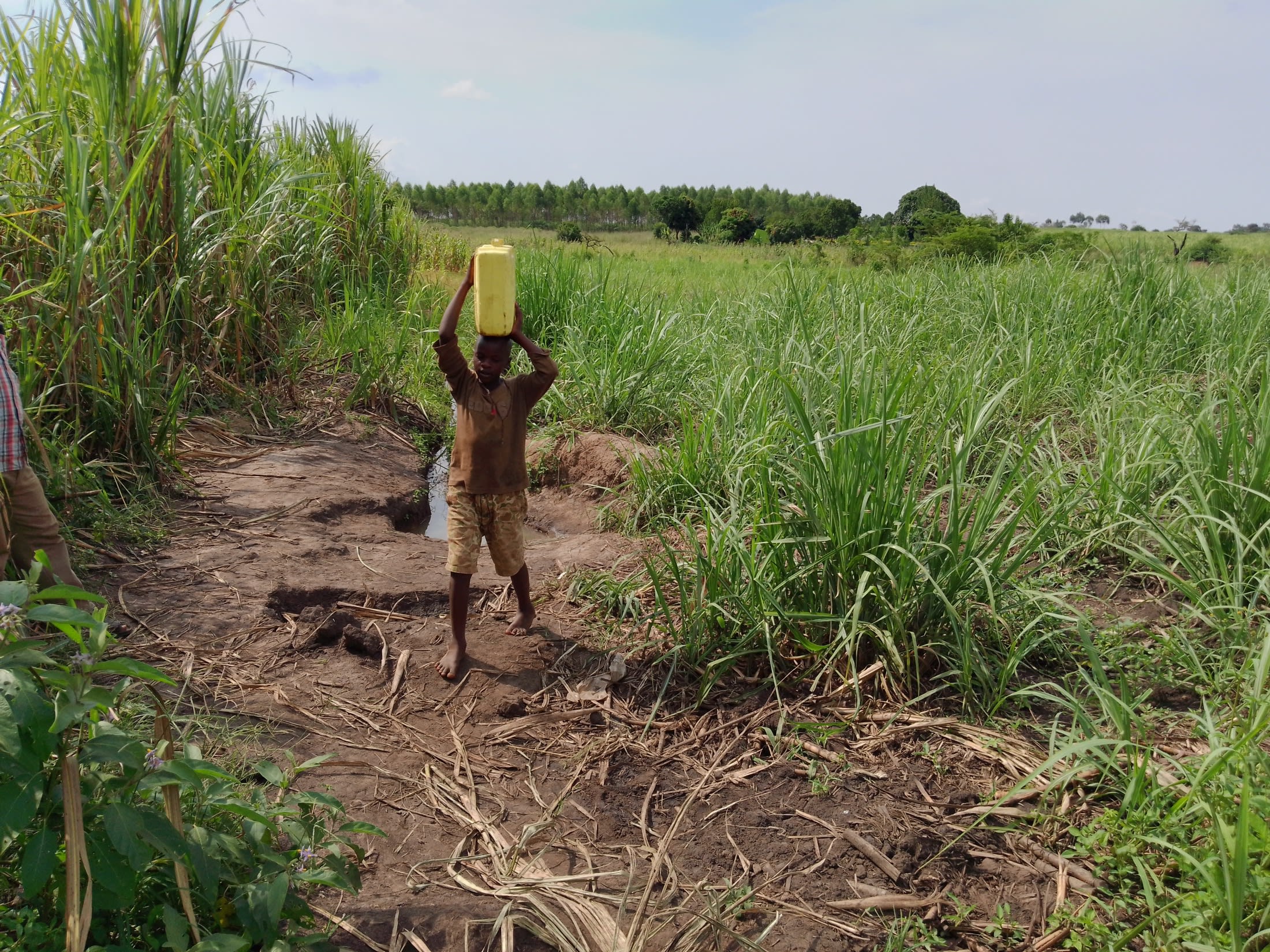The main water point in Kyalikanjeru, an unprotected dug well, is contaminated. The well is also difficult for Kyalikanjeru's 350 people to access because of the far distance, which forces some people to walk up to an hour each way to collect water.
The only other options for the community are a defunct well that community members can no longer use and several muddy, dirty, open pools of water.

The well is also overcrowded. And, after waiting in long lines to collect water, people still face health-related issues such as stomachaches, headaches, and typhoid from drinking the dirty water.
Beatrice Nyamahunge, 55, shown collecting water in the photo below, was asked how the current water situation affects her personally. She said, "The water source is really far. Once you send a child at around 8:00 a.m., they tend to come back home at 12:00 p.m. This affects their feeding time and children's concentration on books, as most of the time is spent fetching water."

Adults and children are missing out on valuable time to focus on other important tasks like increasing their livelihood and attending school.
John H., age 11, shown carrying water in the photo below, was asked about how the current water situation affects him. He said, "The reason I go to the water point is to collect water for bathing, washing my clothes, and cooking. But, whenever I go to the water point, sometimes I find very many people and [I] am not able to collect enough water to wash my clothes and uniforms. This makes me go to school with dirty uniforms, and sometimes the teachers force me back home to wash my uniforms, hence missing school, and this has affected my academic performance in the long run."

It's time for those who live in Kyalikanjeru to have quick access to safe, clean water that they can rely on each day.
Here’s what we’re going to do about it:
New Borehole
This new borehole is an exciting opportunity for this community! We work with the community to determine the best possible sites for this well.
We conducted a hydrogeological survey and the results indicated the water table is an ideal candidate for a borehole well. Due to a borehole well's unique ability to tap into a safe, year-round water column, it will be poised to serve all of the water needs for this community, even through the dry months.
Community members will help collect the needed construction materials such as sand, rocks, and water for mixing cement. They will also provide housing and meals for the work team, in addition to providing local laborers. We will complement their materials by providing an expert team of artisans and drilling professionals, tools, hardware, and the hand-pump. Once finished, water from the well will then be used by community members for drinking, handwashing, cooking, cleaning, and much more.
Training
Training's main objectives are the use of latrines and observing proper hygiene practices since these goals are inherently connected to the provision of clean water. Open defecation, water storage in unclean containers and the absence of hand-washing are all possible contaminants of a household water supply. Each participating village must achieve Open Defecation Free status (defined by one latrine per household) prior to the pump installation for this borehole well.
This social program includes the assignment of one Community Development Officer (CDO) to each village. The CDO encourages each household to build an ideal homestead that includes: a latrine, a handwashing facility, a separate structure for animals, a rubbish pit and a drying rack for dishes.
We also implement the Community-Led Total Sanitation (CLTS) approach with each of our village partners. This aims to improve the sanitation and hygiene practices and behaviors of a village. During these sessions, village leaders naturally emerge and push the community to realize that the current practices of individual households – particularly the practice of open defecation – are not only unhealthy, but affect the entire village. CLTS facilitates a process in which community members realize the negative consequences of their current water, sanitation and hygiene behaviors and are inspired to take action. Group interactions are frequent motivators for individual households to build latrines, use them, and demand that other households do the same.
Improved Sanitation
The aim is that all households own an improved latrine. Many households do not use a latrine but use the bush. Due to open defecation, feces are spread all over the village. This leads to waterborne diseases and contamination of groundwater and surface water. Our aim is that the community is able to live a healthy life free of preventable diseases. We endeavor that at the end of our presence in the community, people will have both access to sustainable, clean water and access to sanitation. We have now organized families to form digging groups for latrine construction, and empowered them with tools to use.

 Borehole Well and Hand Pump
Borehole Well and Hand Pump
 Rehabilitation Project
Rehabilitation Project


























